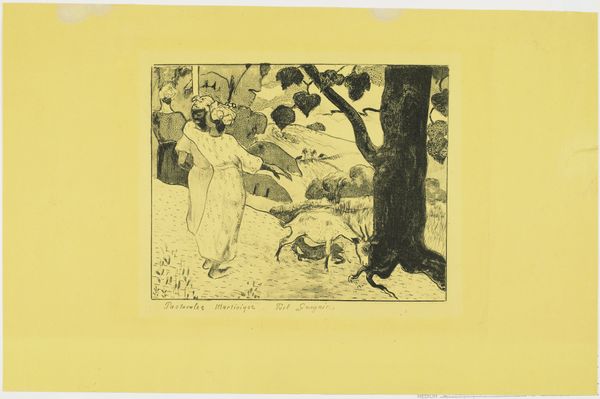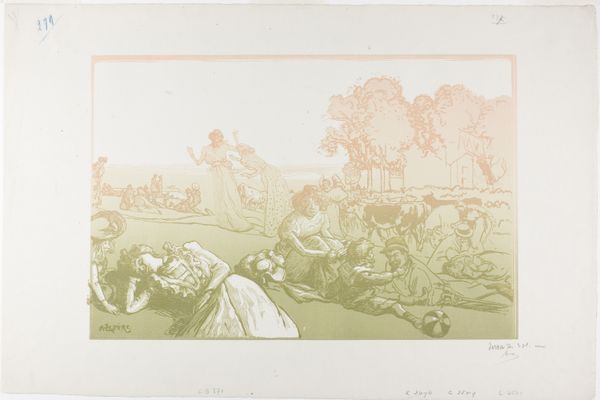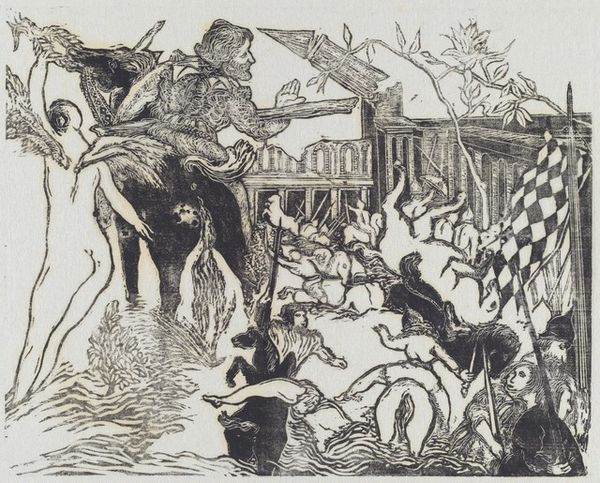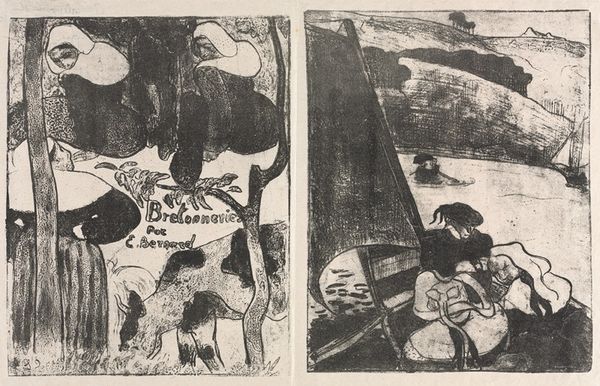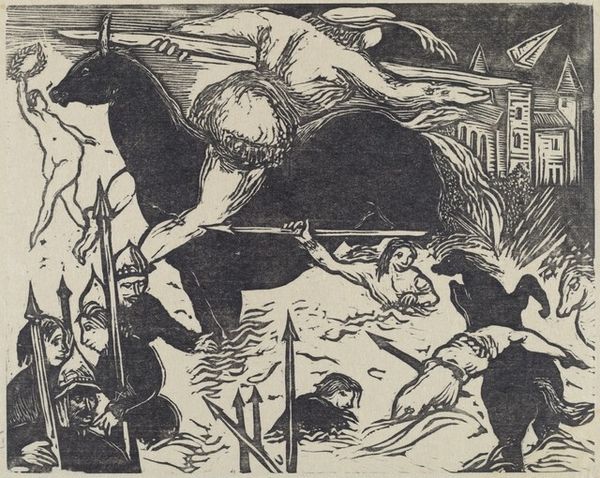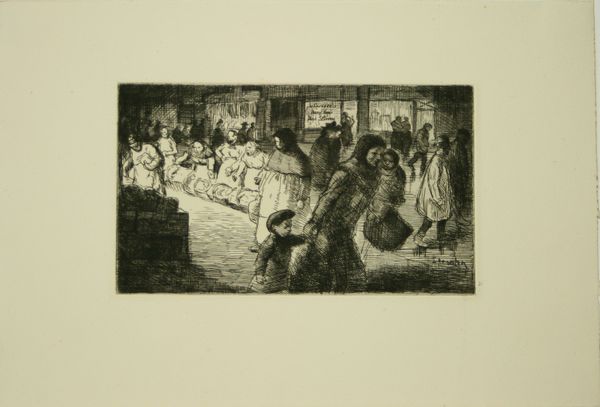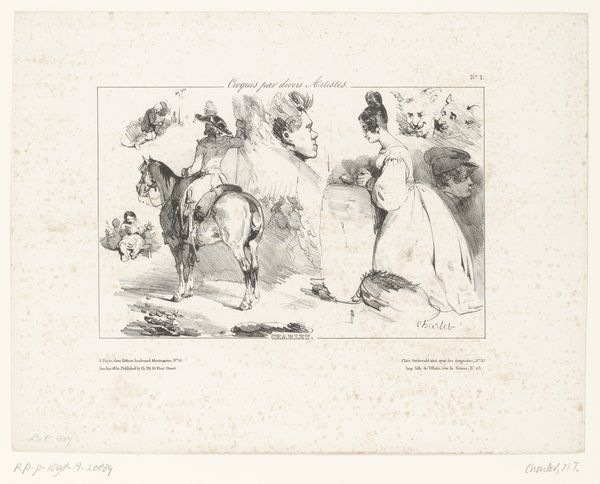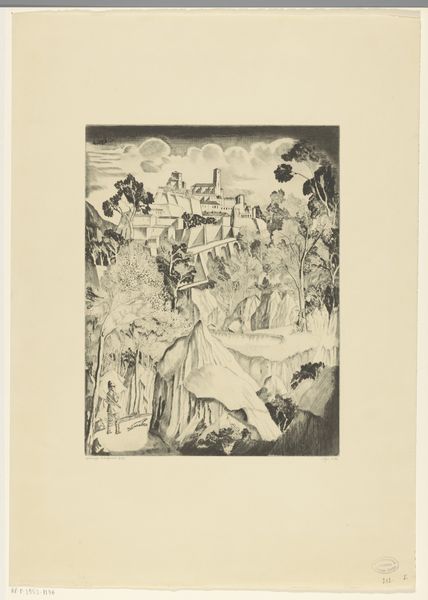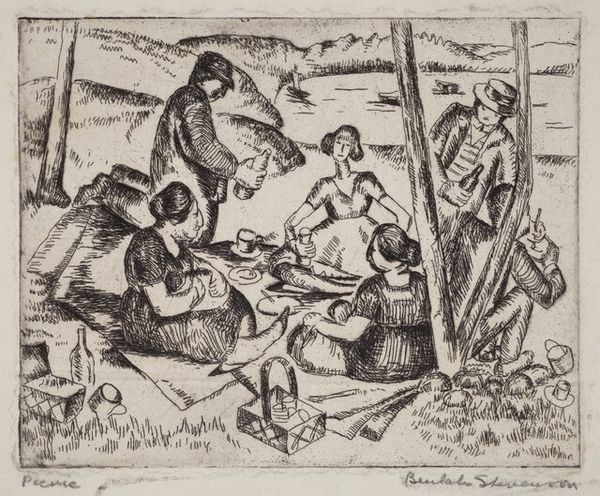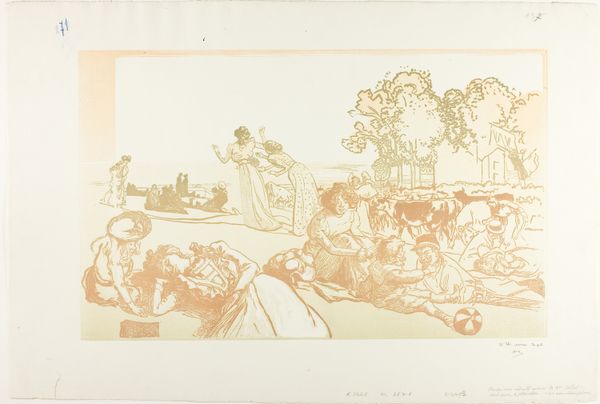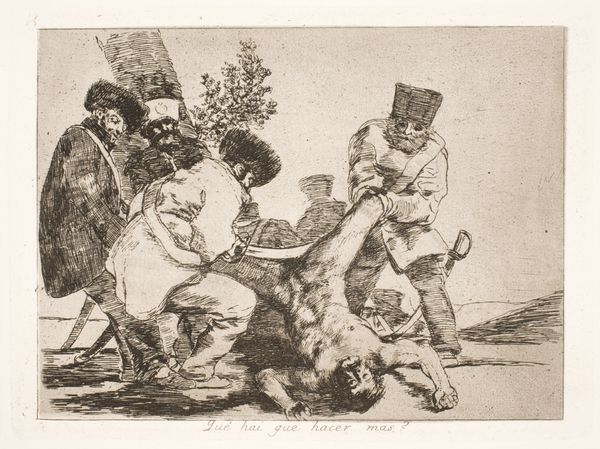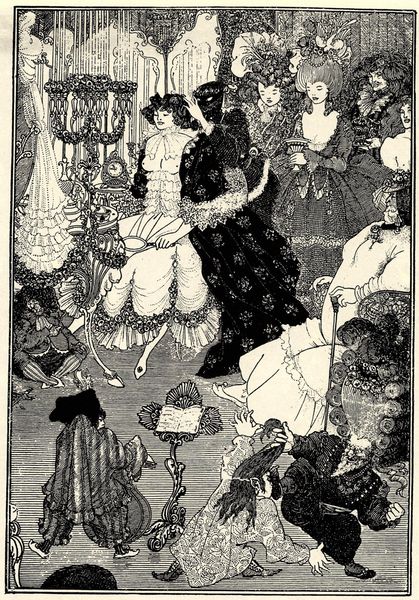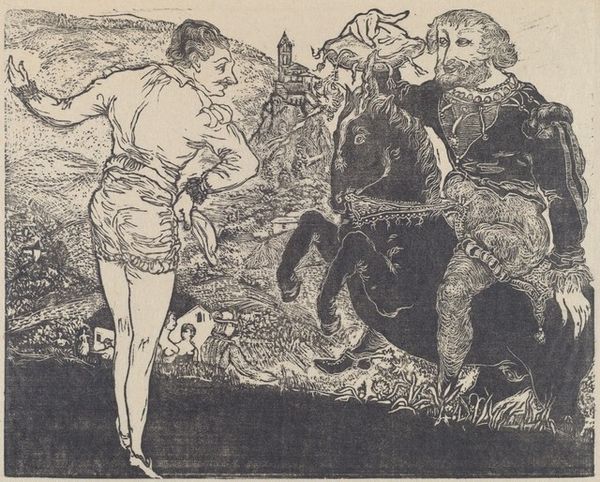
Martinique Pastorals, from the Volpini Suite: Dessins lithographiques 1889
0:00
0:00
drawing, lithograph, print, etching
#
drawing
#
lithograph
# print
#
etching
#
landscape
#
figuration
#
post-impressionism
Dimensions: Image: 6 15/16 × 8 3/4 in. (17.6 × 22.2 cm) Sheet: 13 3/8 × 18 7/8 in. (34 × 48 cm)
Copyright: Public Domain
Curator: What a wonderfully odd, luminous quality to this piece! It's bathed in this dreamlike yellow, and those figures, they feel like they're emerging from a half-remembered story. Editor: Indeed. What you're reacting to is Paul Gauguin's "Martinique Pastorals," a lithograph and etching from 1889, now held here at The Met. It’s part of a larger portfolio of prints he did following a brief, transformative trip to Martinique. Curator: Martinique... you know, it really does have the feel of paradise lost. There’s a heaviness too. Are those women embracing or simply weary together? The goats fighting—it is idyllic, yes, but something feels troubled under the surface. Editor: Absolutely. Gauguin was, if nothing else, attuned to tensions, though sometimes he himself caused them. These prints, presented at the Café Volpini during the 1889 Exposition Universelle, mark a critical moment where Gauguin attempted to claim a symbolic territory outside of academic structures in France. Curator: And in choosing Martinique, wasn’t he deliberately turning away from that very center of power, while still wanting its approval? That whole scene felt rather charged, didn’t it? Almost performative, a theatrical challenge to artistic convention! Editor: Precisely. Remember, this was also a period of intense colonial activity. Gauguin’s journey and resulting artwork speak to the complexities of primitivism, which frequently exoticized cultures outside of Europe while appropriating their artistic motifs and visions for European audiences. Curator: Makes me think... what were the Martiniquans thinking as Gauguin wandered about, translating their lived experience through his very particular lens? Perhaps seeing through the eyes of the other does need more imagination, even tenderness. It’s never quite as simple as setting up an easel and claiming authenticity, is it? Editor: Never. The work raises profound questions about who has the right to represent whom and what gets lost, or twisted, in the process of artistic creation across cultural divides. Curator: It's a tricky path, full of beauty and moral landmines. Still, it’s those very complexities that keep us looking, keep us questioning, and keep art like this vibrantly alive, I suppose! Editor: Indeed, this pastoral scene serves as a striking reminder of the tangled relationship between art, culture, and the gaze that shapes them.
Comments
No comments
Be the first to comment and join the conversation on the ultimate creative platform.
